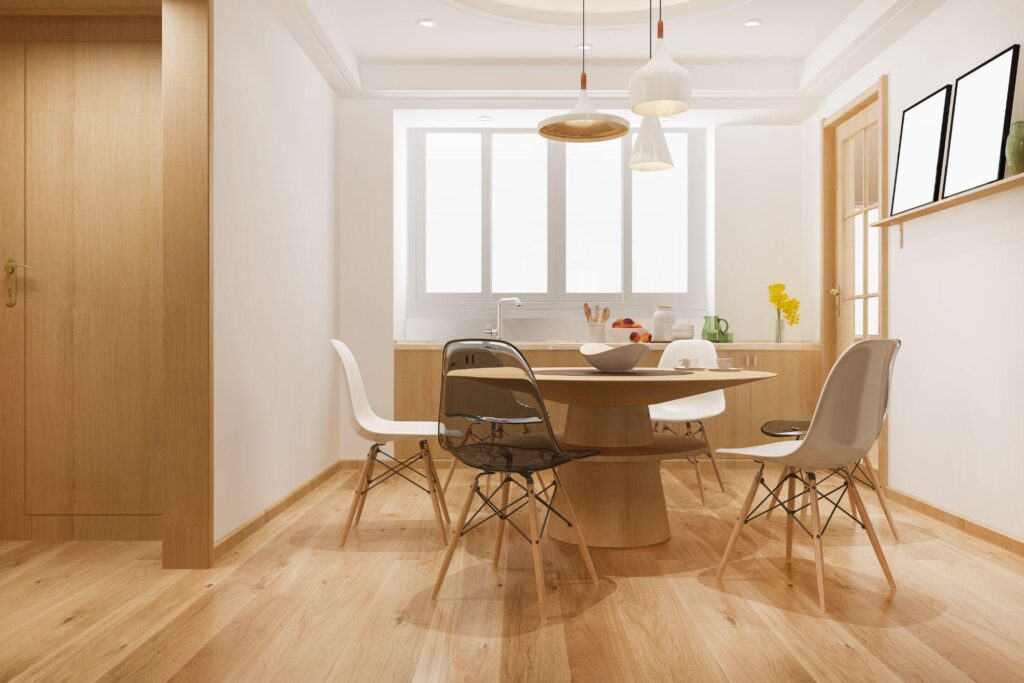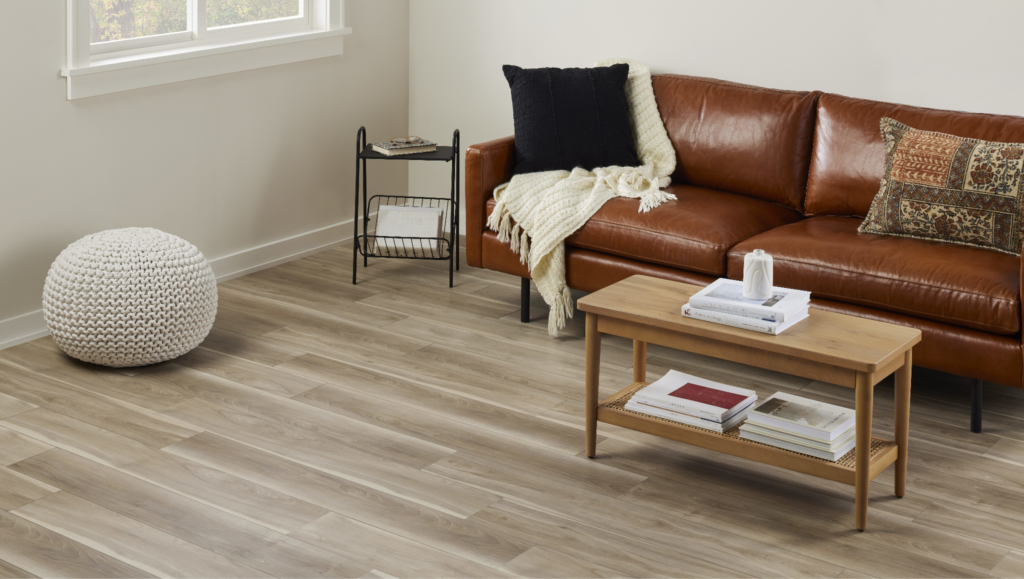
When it comes to vinyl flooring, there are two main options to consider: standard vinyl and luxury vinyl. While both share similarities as they are made from PVC vinyl, there are key differences that can influence your decision. In this article, we will compare standard vinyl and luxury vinyl to help you understand their features and make an informed choice.
Standard Vinyl Flooring: Standard vinyl flooring has long been popular in areas where moisture and stain resistance are important, such as bathrooms, kitchens, basements, and laundry rooms. It consists of a thin layer of vinyl printed with a design and covered with a protective coating. However, standard vinyl is prone to gouging, tearing, and can feel hard underfoot, especially when installed over concrete.
Luxury Vinyl Flooring (LVF): Luxury vinyl flooring, also known as LVF, was developed as an improved alternative to standard vinyl. It is available in semi-rigid luxury vinyl planks (LVP) or luxury vinyl tiles (LVT), which are installed using click-lock interlocking edges. Many people compare luxury vinyl with laminate flooring as secondary options to more expensive materials like hardwood, ceramic, or stone tiles.
Key Differences Between Standard and Luxury Vinyl Flooring
- Construction: Standard vinyl flooring is thin and flexible, typically featuring a wear layer of only 10 to 15 mil (10/1000 to 15/1000 of an inch). Luxury vinyl tiles (LVT), on the other hand, are considerably thicker and more rigid, with multi-ply planks or tiles and wear layers ranging from 2 to 8 mm in thickness (roughly 8/100 to 3/10 of an inch).
- Layers: Luxury vinyl flooring consists of six to eight layers, including a clear top-coat layer for shine, a wear layer for design protection, a printed design layer, a cushion layer for comfort, a fiberglass backing layer, and a solid PVC backing layer for strength. Stone-look luxury vinyl may also include ground mineral content like pulverized limestone.
- Cost: Standard vinyl is more affordable, with per-square-foot material costs ranging from $0.50 to $2. Professional installation typically adds $1 to $2 per square foot. Luxury vinyl tiles, purchased from the same vinyl flooring supplier, generally range from $2 to $6 per square foot, while designer styles can cost $7 or more. DIY installation is common with luxury vinyl tiles especially in cities such as Singapore.
- Durability: Standard vinyl is prone to scratches and may require replacement once wear becomes noticeable, typically lasting 10 to 15 years. Luxury vinyl tiles, with its thicker wear layer and durability, can last 20 to 25 years with proper care. Depending on what your goal is, choosing the right quality of vinyl flooring products can save you a lot of time and effort in the long run.
For appearance, which one stands out more?
- Standard Vinyl: Standard vinyl flooring aims to resemble ceramic, stone, or wood tile, but the simulated cracks between “planks” are usually less convincing due to the smooth, solid wear layer with few seams.
- Luxury Vinyl: Luxury vinyl planks mimic the look of wood, while luxury vinyl tiles simulate stone or ceramic tiles. The latest luxury vinyl offerings are highly realistic, making it a challenging choice between luxury vinyl and laminate flooring when aiming for a wood-like appearance.
Water and Heat Resistance
Both standard vinyl and luxury vinyl are suitable for wet locations like bathrooms and kitchens.
- Standard Vinyl: Standard vinyl sheets have fewer seams, making them highly water-resistant.
- Luxury Vinyl: Luxury vinyl is impervious to water damage. However, seams between planks or tiles caused by improper installation can allow water to seep down to the underlayment.
Care and Cleaning
Maintenance for both standard vinyl and luxury vinyl is similar, requiring regular sweeping or vacuuming, immediate cleanup of spills and stains, and weekly damp mopping with mild soap and warm water. Neither type requires sealers or waxes.
Durability and Maintenance
Standard vinyl is softer and more susceptible to dents, scratches, and tears, often requiring replacement when wear is significant. Luxury vinyl, with its thicker wear layer and the ability to replace individual planks, offers greater durability and easier repairs.
Installation:
- Standard Vinyl: Standard vinyl sheets are usually installed using a full-glue-down bond or perimeter glue bond. Standard vinyl tiles require a glue-down bond.
- Luxury Vinyl: Luxury vinyl planks or tiles are typically installed with click-lock edge joints, allowing for a floating installation. Some luxury vinyl options also offer a glue-down installation method.
Home Resale Value
Standard vinyl flooring is considered a budget-friendly option and does not add significant value to real estate. Luxury vinyl planks and tiles, although not as prestigious as hardwood or ceramic tiles, offer better resale value than standard vinyl.
Comfort and Sound:
- Standard Vinyl: Standard vinyl can feel hard and cold underfoot, especially on concrete subfloors.
- Luxury Vinyl: Luxury vinyl, with its thicker construction and sometimes added cushion or foam underlayment layers, offers softer and more comfortable flooring, along with better sound insulation.
While both standard vinyl and luxury vinyl have their advantages and drawbacks, luxury vinyl is generally the better choice due to its increased durability, lifespan, and realistic appearance. Standard vinyl can be a more budget-friendly option and may be preferable in areas where minimal seams and full water resistance are essential.
Consider your specific needs and budget when deciding between these two types of vinyl flooring. Remember to choose a reputable brand that offers quality products for the best results. For more information, take a look at some of our LVT flooring options we have to offer at Vinyl Flooring Singapore Ltd.



